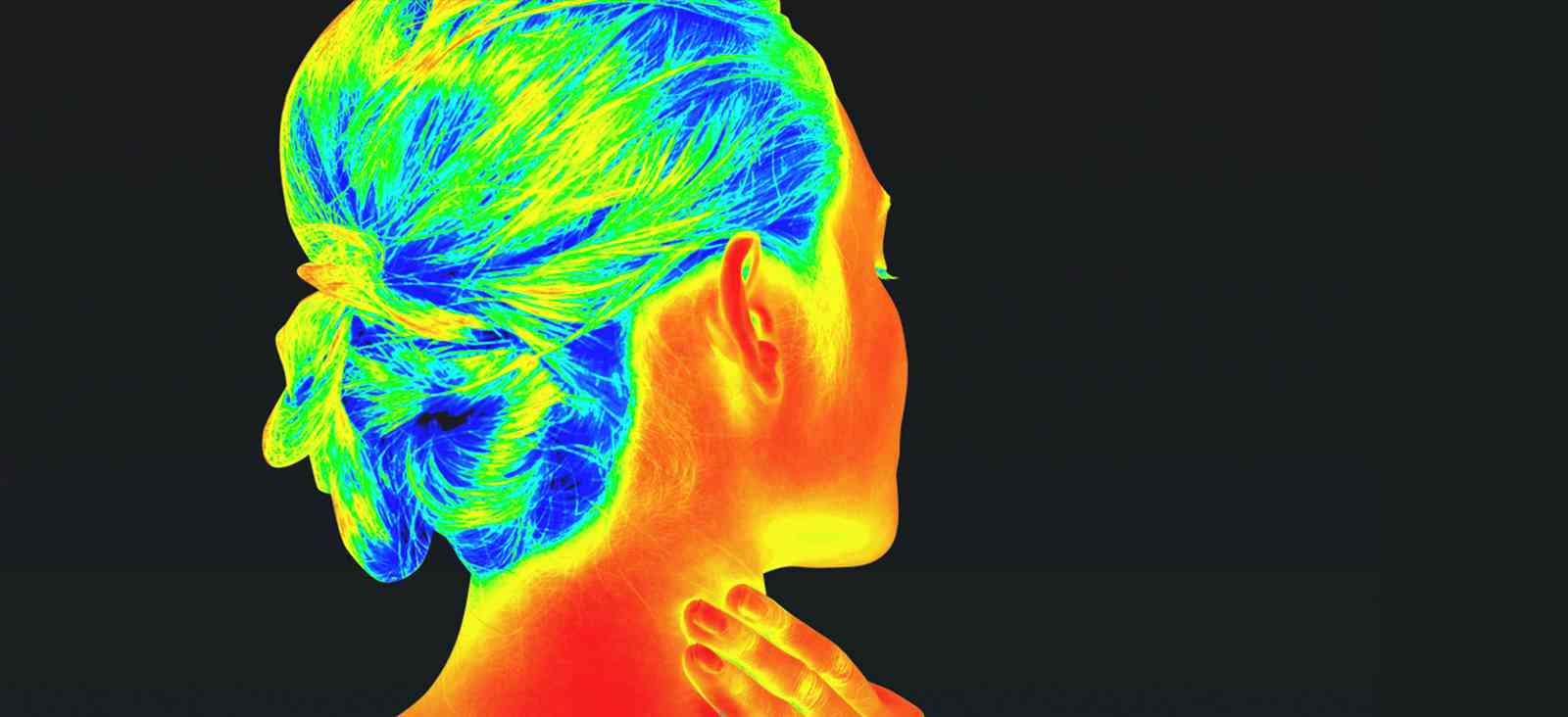What are thermal cameras?

The Thermal Camera exhibit in Camera Obscura & World of Illusions, Edinburgh uses an infrared camera which can detect heat patterns and blood flow in body tissues. This technology, known as Digital Infrared Thermal Imaging (DITI) is the type of thermal imaging that has been used to diagnose breast cancer in the past.
It is a non-invasive test that also involves no radiation. The idea behind this technology is that because cancer cells are growing and multiplying very fast, blood flow and metabolism are high in a cancer tumour. As blood flow and metabolism increase, skin temperature goes up. Inflammation can also cause an increase in skin temperature.
Why thermography is not used in diagnosis

More recent studies have found that thermography does not detect cancer accurately enough on its own. Doctors can use the observations from a trained thermographer in combination with regular screening procedures. The Ville Marie study showed that a combination of thermography and mammography had a 95% sensitivity as opposed to just thermography.
All breast cancer treatments have advantages and disadvantages, but researchers state that using them in conjunction provides the most accurate results for patients. Providers of thermography clearly state that the technique does not detect cancer, it can only alert a person to changes that need further investigation. For example, a heat increase may also detect mastitis, which is a noncancerous disease.
Another disadvantage of thermography is that the images from the camera cannot show how the breast itself has changed. Thermography can also show changes that are not cancerous or alternatively not reveal cancerous changes that are present. In 2012, researchers from The New Zealand Medical Journal expressed concern about the high-rates of false-positive and false-negative results. They concluded that thermography is not sufficiently sensitive to be used as a screening test for breast cancer or is it a useful indicator of developing it within the next 5 years.
Welin Wu, health information officer at Cancer Research UK, said: ‘Thermography isn’t an effective way to detect breast cancer, which is why it is not approved by the NHS. If you notice anything that isn’t normal for you or doesn’t go away - in most cases, it won’t be cancer – but if it is, finding it early can make a real difference.’
The FDA also agreed that thermography is not a suitable substitute for a mammogram.
Always speak to your health professional
The NHS recommends self-checking breast examinations. If any abnormalities are found then, it is highly recommended that you visit your GP urgently rather than diagnosing yourself externally. The NHS also offers free breast screening after your 50th birthday, when the risk of developing breast cancer increases.
If you have any concerns after reading this article, please contact your GP immediately. For more information on breast cancer symptoms, treatments and support, visit the NHS website.

